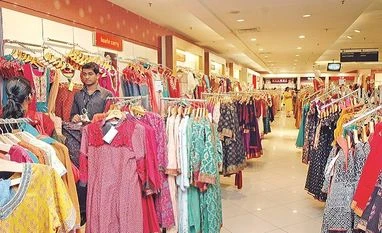Visibility, affordability and variety in terms of the styles on offer are among the key drivers of the strategy adopted by Indian fashion labels. Many are picking up cues from the way global brands manage their promotions and the way they pitch their end of season sales. There is also an increasing understanding that fashion is no longer bound by geography, styles are fluid and short-lived and to make the most of the huge investments in designers and infrastructure, it is important to be present in multiple markets.
Last month Anita Dongre (AND, Global Desi labels) opened her first store in the US, Anita Dongre Grassroot on New York’s Broome Street. For the House of Anita Dongre, this marks a maturing of the brand that started out as a bridal couture label in 1995. Back home, her company, House of Anita Dongre is upgrading its stores in the big metros and looking to penetrate deeper in tier II and III cities. “We want to have the first mover advantage there before the likes of H&M and Zara,” said Bijit Nair, president-retail at House of Anita Dongre. Out of 100 exclusive stores that it plans to open, 70 will be in tier II and III cities, Nair said, adding “Global brands will take some time to expand in these cities.”
While expanding the brand footprint is expected to take the label to a wider audience, companies are also focusing on churning out new designs faster. But that would mean streamlining their supply systems, where many brands could falter say experts.
“I think players like H&M, Forever 21 and so on will alter the Indian market greatly. The economy, affordable, mid-priced Indian brands will feel the heat and re-think their strategy as consumers will shift to international street fashion brands, shunning the Indian brands which till now were largely playing a lower price than the market leader game,” said Baqar Naqvi, director at Wazir Advisors.
Nair said that House of AND is looking at how to bring more freshness in their merchandise. He wants to bring new styles every fortnight and give more value to customers. And this will be done not just for city-bred fashionistas, but for small town buyers too.
The advent of global brands and the rising popularity of online marketplaces have made it evidently clear that the old lines between fashion consumers in big cities and small towns is fast blurring. E-commerce has played a big role here. According to Euromonitor International, Internet retailing in India grew by 1,200 per cent since 2011. The fastest product categories moving online were apparel and footwear and consumer electronics, which have been the first categories to migrate online globally. In India, both categories have a relatively high penetration rate of online sales at 9.5 per cent and 15 per cent respectively (2016), the report said.
Nair believes that smaller cities have ready customers, hungry for branded fashion, but they do not have many options. However, mapping consumer aspirations is a tricky game. Naqvi is skeptical of the efforts being made by the desi brands; these brands neither rate well on fashion and aspirations nor on pricing, he said. He believes that global players bring sourcing strengths to the table that few can match. Proof lies in the way in which H&M has swept the Indian market.
However the homegrown brands may have an advantage when it comes to moving into tier III towns if they can beat the others to the game. The global brands are looking to expand in the metros where they are already present and moving into the tier II towns where they have a ready base of customers but marginal and even no retail presence.
Apart from visibility, style and retail footprint, the Indian brands are also learning to play the discount game more smartly. Instead of pitching themselves as cheap alternatives to global labels, they are organising sales and seasonal discounts and being more fliexible with their pricing strategies, just like the international brands.
Mumbai-based fashion chain Mineral is thinking of moving prices down by 12 to 15 per cent across the board, to improve volumes, said its chief executive Jaydeep Shetty. “We think if prices drop by 12-15 per cent, volumes can go up by 40 per cent. The idea is to offer better quality and sharply priced products compared to fast fashion brands,” Shetty said. He is perhaps taking the lead from Zara, the Spanish chain that cut prices by 10-12 per cent last year to become more affordable and launched new collections after H&M entered the Indian market. Naqvi says cutting prices will only work in a limited way, as the global brands not only are lower and sharply priced but also have the appeal of being ‘international’ and have the edge of being in sync with the latest fashion trends. “So instead of pricing lower, I think the strategy for Indian brands should be to find their own niche,” he says.
To read the full story, Subscribe Now at just Rs 249 a month
Already a subscriber? Log in
Subscribe To BS Premium
₹249
Renews automatically
₹1699₹1999
Opt for auto renewal and save Rs. 300 Renews automatically
₹1999
What you get on BS Premium?
-
Unlock 30+ premium stories daily hand-picked by our editors, across devices on browser and app.
-
Pick your 5 favourite companies, get a daily email with all news updates on them.
Full access to our intuitive epaper - clip, save, share articles from any device; newspaper archives from 2006.
Preferential invites to Business Standard events.
Curated newsletters on markets, personal finance, policy & politics, start-ups, technology, and more.
Need More Information - write to us at assist@bsmail.in
)